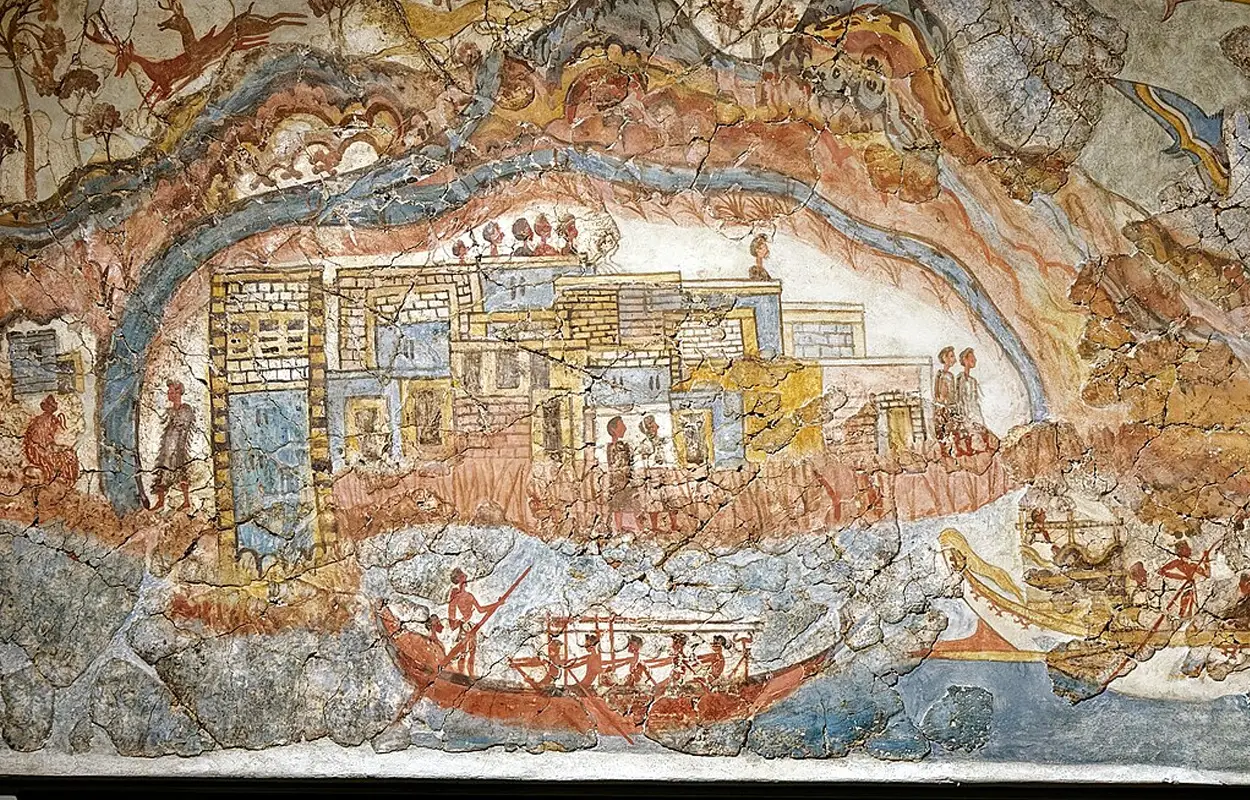A new study published in the journal PLOS ONE presents new evidence that the volcanic eruption of Minoan Thera (modern-day Santorini) occurred before the reign of Pharaoh Ahmose I, overturning long-held views of Bronze Age chronology.
The Minoan Thera eruption has long been linked to Egypt’s 18th Dynasty around 1500 BC, serving as a key reference point or chronological marker for aligning Aegean, Anatolian, and Egyptian historical timelines.
The eruption destroyed the Minoan settlement at Akrotiri, as well as communities and agricultural areas on nearby islands, and the coast of Crete with subsequent earthquakes and tsunamis.
The study authors analysed Ancient Egyptian artefacts associated with the late 17th and early 18th Dynasties, including a mudbrick stamped with Ahmose’s royal name from Abydos, a linen burial cloth linked to Queen Satdjehuty, and wooden funerary figurines from Thebes.
Organic material on the objects was subjected to carbon 14 dating, which was compared with datasets of the previously established ^14C ages for the Minoan Thera eruption.
The study found contrasting results within the data, indicating that the Thera eruption’s radiocarbon ages are significantly older than those from the Egyptian artefacts, placing the eruption before the start of the 18th Dynasty and into the Second Intermediate Period, rather than during the early New Kingdom.
According to the study authors: “Assessments relating the Ahmose Tempest Stela at Karnak (Thebes) and its description of severe rainstorms to the Minoan Thera eruption can now be considered incorrect. Indeed, severe rainstorms in southern Egypt in the area of Thebes are extremely rare, because the region has a hyper-arid desert climate with hardly any rainfall at all.”
“Rare rainfall events in the Thebes region are not derived from the Mediterranean Sea (Thera), but are occasionally generated by the atmospheric Red Sea Trough, extending from the African Monsoon over equatorial Africa northward over the Red Sea region.”
Header Image Credit : Holger Uwe Schmitt – CC BY-SA 4.0
Sources : PLOS ONE – https://doi.org/10.1371/journal.pone.0330702





